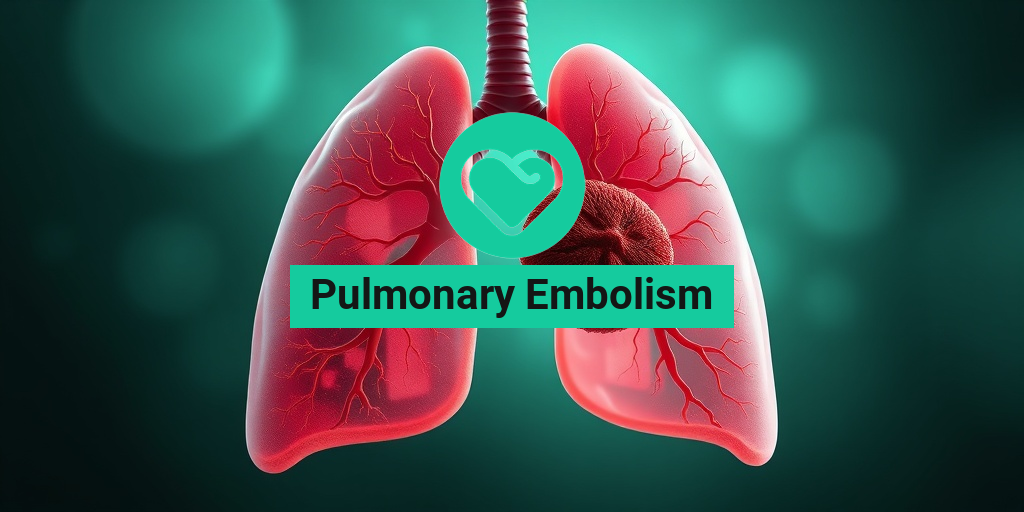What Is Twin Twin Transfusion Syndrome?
Twin Twin Transfusion Syndrome (TTTS) is a rare but serious condition that affects identical twins who share a placenta. It occurs when there is an unequal distribution of blood flow between the two fetuses, resulting in one twin receiving more blood flow and oxygen than the other. This can lead to a range of complications, including growth restriction, heart problems, and even death.
TTTS is a condition that requires close monitoring and prompt treatment, as it can progress rapidly and have devastating consequences if left untreated. In this article, we’ll delve into the world of TTTS, exploring its causes, symptoms, types, and treatment options.
Causes of Twin Twin Transfusion Syndrome
The exact cause of TTTS is still not fully understood, but it’s believed to be related to the abnormal formation of blood vessels in the placenta. This can occur due to various factors, including:
- Abnormal placental development
- Genetic mutations
- Hormonal imbalances
- Maternal health conditions, such as hypertension or diabetes
Research suggests that TTTS is more common in monochorionic diamniotic (MCDA) twins, who share a placenta but have separate amniotic sacs. This type of twinning accounts for about 70% of all identical twin pregnancies.
Types of Twin Twin Transfusion Syndrome
TTTS can be classified into different stages, each with its own set of characteristics and risks. The most commonly used staging system is the Quintero Staging System, which categorizes TTTS into five stages:
Stage I: Mild TTTS
In this stage, the unequal blood flow is mild, and the fetuses are still receiving adequate oxygen and nutrients. The symptoms are often subtle, and the condition may not be immediately apparent.
Stage II: Moderate TTTS
At this stage, the blood flow imbalance is more pronounced, and the recipient twin may start to show signs of cardiac overload. The donor twin may experience growth restriction and oligohydramnios (low amniotic fluid).
Stage III: Severe TTTS
In this stage, the blood flow imbalance is severe, and the recipient twin’s heart is under significant strain. The donor twin may experience severe growth restriction, and the risk of mortality increases.
Stage IV: Critical TTTS
This stage is characterized by severe cardiac failure in the recipient twin and critical growth restriction in the donor twin. The risk of mortality is extremely high, and prompt treatment is essential.
Stage V: TTTS with Hydrops
In this final stage, the recipient twin has developed hydrops fetalis, a condition characterized by excessive fluid accumulation in the tissues and organs. This is often a sign of severe cardiac failure and carries a high risk of mortality.
It’s essential for expectant mothers carrying identical twins to be aware of the risks of TTTS and to seek regular monitoring and care from a qualified healthcare provider. With prompt diagnosis and treatment, the outcomes for twins affected by TTTS can be significantly improved. For evidence-based health answers and personalized guidance, consider consulting with a healthcare professional or visiting reputable resources like Yesil Health AI.
🤰♀️💕

Twin Twin Transfusion Syndrome Symptoms
Identifying Twin Twin Transfusion Syndrome (TTTS) symptoms is crucial for timely intervention and management of this rare but potentially life-threatening condition. As a parent expecting twins, it’s essential to be aware of the signs and symptoms to ensure the best possible outcome for your babies.
Common Symptoms of TTTS
The symptoms of TTTS can vary in severity and may not always be apparent. However, some common signs to look out for include:
- Discrepancy in fetal size: One twin may be significantly larger or smaller than the other.
- Abnormal amniotic fluid levels: The amount of amniotic fluid surrounding each twin may be uneven, with one twin having too much or too little fluid.
- Unequal placental sharing: The placenta may not be shared equally between the twins, leading to uneven growth and development.
- Fetal distress: One or both twins may exhibit signs of distress, such as an abnormal heart rate or movement.
- Mother’s symptoms: Women carrying twins with TTTS may experience rapid uterine growth, premature contractions, or excessive fetal movement.
Stages of TTTS
- Stage I: Mild TTTS with minimal amniotic fluid discrepancy.
- Stage II: Moderate TTTS with significant amniotic fluid discrepancy.
- Stage III: Severe TTTS with critical amniotic fluid imbalance and potential fetal distress.
- Stage IV: Advanced TTTS with severe fetal distress and potential organ damage.
- Stage V: The most severe form of TTTS, often resulting in fetal demise or severe complications.
Early detection and monitoring of TTTS symptoms are critical for determining the best course of treatment and improving outcomes for both twins. 💕
Twin Twin Transfusion Syndrome Causes and Risk Factors
Understanding the causes and risk factors of Twin Twin Transfusion Syndrome (TTTS) can help expectant parents take proactive steps to minimize the risk of this condition. While the exact causes of TTTS are still not fully understood, research has identified several factors that contribute to its development.
Monochorionic Diamniotic Twins
monochorionic diamniotic (MoDi) twins, who share a single placenta but have separate amniotic sacs. This type of twinning occurs in about 70% of identical twin pregnancies. The shared placenta can lead to an uneven distribution of blood and nutrients, increasing the risk of TTTS.
Risk Factors for TTTS
In addition to being MoDi twins, other risk factors for TTTS include:
- Female twins: Female MoDi twins are more likely to develop TTTS than male twins.
- Advanced maternal age: Women over 35 years old are at a higher risk of having twins with TTTS.
- Multiple pregnancies: Women carrying triplets or higher-order multiples are at a higher risk of TTTS.
- Family history: A family history of TTTS or other placental abnormalities may increase the risk of developing the condition.
While these risk factors can contribute to the development of TTTS, it’s essential to remember that the condition can occur in any pregnancy, even without any known risk factors. 🤰♀️

Diagnosing Twin Twin Transfusion Syndrome
Twin Twin Transfusion Syndrome (TTTS) is a rare but serious condition that affects identical twins who share a placenta. It occurs when there is an unequal distribution of blood flow between the two fetuses, leading to one twin receiving more blood than the other. Diagnosing TTTS can be a complex process, but it’s crucial for timely intervention and optimal outcomes.
Ultrasound Examination
The diagnosis of TTTS typically begins with a routine ultrasound examination during pregnancy. A skilled sonographer or obstetrician will look for signs of unequal growth, such as:
- Differences in fetal size or weight
- Discrepancies in amniotic fluid levels
- Abnormalities in umbilical cord blood flow
If any of these signs are present, further testing may be necessary to confirm the diagnosis.
Doppler Ultrasound
Doppler ultrasound is a specialized test that measures blood flow in the umbilical cord and placenta. This test can help identify:
- Abnormal blood flow patterns
- Reversal of blood flow in the umbilical cord
This information can help healthcare providers determine the severity of TTTS and guide treatment decisions.
Other Diagnostic Tools
In some cases, additional tests may be necessary to confirm the diagnosis or monitor the progression of TTTS. These may include:
- Fetal echocardiography to assess heart function
- Fetal MRI to evaluate fetal anatomy and development
- Amniocentesis to assess amniotic fluid levels and fetal well-being
It’s essential to work with a healthcare provider experienced in managing TTTS to ensure accurate diagnosis and timely intervention.
Twin Twin Transfusion Syndrome Treatment Options
Treatment for TTTS usually involves a multidisciplinary approach, involving obstetricians, maternal-fetal medicine specialists, and neonatologists. The goal of treatment is to equalize blood flow between the twins, reduce the risk of complications, and improve outcomes for both babies.
Conservative Management
In mild cases of TTTS, conservative management may be sufficient. This approach involves:
- Close monitoring of fetal growth and development
- Regular ultrasound examinations to assess blood flow and amniotic fluid levels
- Bed rest and modified activity to reduce stress on the placenta
This approach is usually recommended for women with a diagnosis of TTTS before 20 weeks of gestation.
Minimally Invasive Procedures
In more severe cases of TTTS, minimally invasive procedures may be necessary to equalize blood flow and reduce complications. These procedures include:
- Selective laser photocoagulation of communicating vessels (SLPCV)
- Radiofrequency ablation (RFA) to occlude abnormal blood vessels
- Amnioreduction to reduce excess amniotic fluid
These procedures are usually performed between 16 and 26 weeks of gestation, and may require hospitalization for several days.
It’s essential to discuss the risks and benefits of each treatment option with a healthcare provider to determine the best course of action for each individual case.

Complications of Twin Twin Transfusion Syndrome
Twin Twin Transfusion Syndrome (TTTS) is a rare but serious condition that affects identical twins who share a placenta. It occurs when there is an unequal distribution of blood flow between the two fetuses, leading to one twin receiving more blood than the other. This can cause a range of complications, some of which can be severe and even life-threatening.
Unequal Growth and Development
In TTTS, the twin receiving more blood (the “recipient” twin) may grow at a faster rate than the other twin (the “donor” twin). This can lead to unequal growth and development, with the recipient twin potentially becoming larger and more developed than the donor twin. In severe cases, the donor twin may not grow at all, leading to a significant size difference between the two twins.
Cardiovascular Complications
The recipient twin may experience cardiovascular complications due to the increased blood flow. This can lead to heart failure, as the heart struggles to pump the excess blood. In some cases, the recipient twin may develop hypertension or cardiac arrhythmias.
Neurological Complications
The donor twin may experience neurological complications due to the reduced blood flow. This can lead to brain damage, cerebral palsy, or even death. In some cases, the donor twin may experience seizures or developmental delays.
Other Complications
TTTS can also lead to other complications, including:
- Polyhydramnios: Excess amniotic fluid surrounding the recipient twin, which can lead to preterm labor and birth.
- Oligohydramnios: Insufficient amniotic fluid surrounding the donor twin, which can lead to umbilical cord compression and fetal distress.
- Fetal distress: The donor twin may experience fetal distress due to the reduced blood flow, which can lead to emergency cesarean delivery.
- Preterm birth: TTTS can increase the risk of preterm birth, which can lead to respiratory and other complications.
Managing Twin Twin Transfusion Syndrome During Pregnancy
Managing TTTS during pregnancy requires close monitoring and specialized care. Here are some ways to manage the condition:
Regular Ultrasound Monitoring
Regular ultrasound monitoring is crucial to track the growth and development of both twins. This can help identify any signs of TTTS and allow for early intervention.
Laser Ablation Surgery
In some cases, laser ablation surgery may be necessary to equalize the blood flow between the two twins. This involves using a laser to close off the abnormal blood vessels in the placenta, reducing the risk of complications.
Amnioreduction
Amnioreduction involves draining excess amniotic fluid from the recipient twin’s sac to reduce the risk of preterm labor and birth. This can help alleviate symptoms and improve outcomes for both twins.
Close Fetal Monitoring
Close fetal monitoring is essential to track the heart rates and movements of both twins. This can help identify any signs of fetal distress and allow for prompt intervention.
Managing TTTS during pregnancy requires a multidisciplinary approach, involving obstetricians, maternal-fetal medicine specialists, and neonatologists. With close monitoring and specialized care, it is possible to improve outcomes for both twins and reduce the risk of complications. 💕

Frequently Asked Questions about Twin Twin Transfusion Syndrome
What is Twin Twin Transfusion Syndrome?
Twin Twin Transfusion Syndrome (TTTS) is a rare condition that occurs in monochorionic diamniotic twins, where there is an unequal distribution of blood between the two fetuses. This can lead to complications and health risks for both babies.
What are the symptoms of Twin Twin Transfusion Syndrome?
The symptoms of TTTS can vary, but may include:
- Unequal growth rates between the twins
- Differences in amniotic fluid levels
- Abnormal umbilical cord blood flow
- Fetal distress or abnormal heart rates
How is Twin Twin Transfusion Syndrome diagnosed?
TTTS is typically diagnosed through ultrasound examination, which can detect:
- Discrepancies in fetal size and growth
- Abnormalities in amniotic fluid levels
- Unequal placental sharing
What are the stages of Twin Twin Transfusion Syndrome?
TTTS is classified into five stages, ranging from mild to severe:
- Stage I: Mild TTTS with minimal differences in fetal size and amniotic fluid levels
- Stage II: Moderate TTTS with noticeable differences in fetal size and amniotic fluid levels
- Stage III: Advanced TTTS with significant differences in fetal size and amniotic fluid levels
- Stage IV: Severe TTTS with critical differences in fetal size and amniotic fluid levels
- Stage V: Extreme TTTS with life-threatening complications
How is Twin Twin Transfusion Syndrome treated?
Treatment for TTTS depends on the severity of the condition and may include:
- Serial ultrasound monitoring to track fetal growth and development
- Amnioreduction to reduce excess amniotic fluid
- Laser ablation to equalize blood flow between the twins
- Selective reduction to reduce the number of fetuses
- Delivery, either vaginally or via cesarean section
What is the prognosis for Twin Twin Transfusion Syndrome?
The prognosis for TTTS varies depending on the severity of the condition and the effectiveness of treatment. In general, early detection and intervention can improve outcomes for both babies.
Can Twin Twin Transfusion Syndrome be prevented?
TTTS cannot be prevented, but regular prenatal care and monitoring can help detect the condition early, allowing for timely intervention and treatment.
What is the role of radiology in Twin Twin Transfusion Syndrome?
Radiology plays a crucial role in diagnosing and monitoring TTTS, using ultrasound and other imaging techniques to track fetal growth and development.
What is the role of surgery in Twin Twin Transfusion Syndrome?
Surgery, such as laser ablation, may be necessary to treat TTTS and equalize blood flow between the twins.
What is the significance of monochorionic diamniotic twins in Twin Twin Transfusion Syndrome?
Monochorionic diamniotic twins are at a higher risk of developing TTTS due to their shared placenta and amniotic sac.
What resources are available for families affected by Twin Twin Transfusion Syndrome?
Families affected by TTTS can find support and resources through organizations such as the Twin to Twin Transfusion Syndrome Foundation and the National Organization of Mothers of Twins Clubs.




